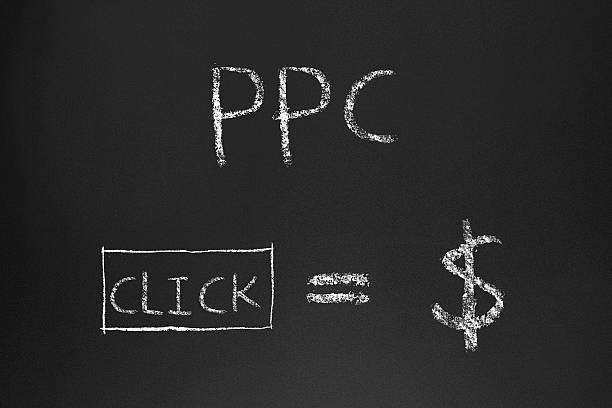Are your PPC campaigns delivering the results you need, or are you throwing money at ads without clear insights? Have you ever found yourself overwhelmed by data, wondering which numbers truly matter? Measuring the success of your PPC campaign success can feel daunting, but it doesn’t have to be. With a clear understanding of key metrics, you can track progress, optimize performance, and confidently scale your campaigns.
In this post, we’ll dive deep into the most critical PPC metrics. Furthermore, from clicks to conversions and cost-efficiency to profitability, each metric provides a unique lens to evaluate your campaigns. Whether you’re a seasoned marketer or just starting, this guide will empower you to make data-driven decisions for greater ROI.
Why Measuring PPC Success is Essential
Running a PPC campaign without measurement is like driving a car with no dashboard—sure, you’re moving, but you have no idea how fast or far. So, measuring PPC success isn’t just a nice-to-have; it’s critical to ensuring your efforts are worthwhile.
By tracking key metrics, you can:
- Identify opportunities: Discover what’s working and replicate success.
- Pinpoint weaknesses: Spot underperforming areas and refine your strategy.
- Maximize your budget: Allocate resources where they’ll yield the highest return.
- Understand audience behavior: Gain insights into how customers interact with your ads and website.
Now, let’s break down the metrics that matter most and how they contribute to campaign success.
1. Click-Through Rate (CTR) – PPC Campaign Success
What is CTR?
CTR measures how many people click your ad after seeing it, providing insights into how engaging and relevant your ad is.
CTR=ClicksImpressions×100\text{CTR} = \frac{\text{Clicks}}{\text{Impressions}} \times 100CTR=ImpressionsClicks×100
A higher CTR indicates that your ad is resonating with your audience and compelling them to take action. However, a low CTR may suggest that your ad isn’t standing out or aligning with search intent.
Why CTR Matters
CTR is more than just a vanity metric; it directly affects your ad’s Quality Score (more on this later) and, subsequently, your cost-per-click (CPC). Also, a strong CTR means your ad copy, keywords, and targeting are aligned effectively, driving more traffic to your website.
How to Improve CTR
- Craft compelling ad copy: Use persuasive language and address your audience’s pain points.
- Incorporate numbers or statistics: Headlines with quantifiable benefits often perform better (e.g., “Save 50% Today!”).
- A/B test ads: Experiment with different headlines, descriptions, and CTAs to identify what resonates most.
- Leverage ad extensions: Add features like site links, phone numbers, or promotions to make your ad more appealing.
2. Quality Score
What is Quality Score?
Quality Score is Google’s rating of your ad relevance and quality, scored on a scale from 1 to 10. It’s influenced by:
- Expected CTR
- Ad relevance
- Landing page experience
Why Quality Score Matters
A higher Quality Score can significantly lower your CPC while improving your ad rank. Additionally, Google rewards advertisers who create relevant, user-friendly campaigns.
How to Boost Quality Score
- Refine your keyword targeting: Ensure your keywords align with search intent and ad content.
- Optimize landing pages: Create seamless experiences with fast-loading, mobile-friendly designs.
- Focus on ad relevance: Write ads that directly reflect the keywords and solutions your audience seeks.
3. Conversion Rate – PPC Campaign Success
What is Conversion Rate?
While CTR measures clicks, Conversion Rate tells you how many of those clicks turn into valuable actions, such as purchases, sign-ups, or downloads.
Conversion Rate=ConversionsClicks×100\text{Conversion Rate} = \frac{\text{Conversions}}{\text{Clicks}} \times 100Conversion Rate=ClicksConversions×100
Why Conversion Rate Matters
A high conversion rate means your ad isn’t just attracting traffic—it’s driving meaningful engagement. Also, this metric helps you understand whether your landing pages and offers are compelling enough to close the deal.
How to Improve Conversion Rate
- Simplify your landing page: Remove distractions and keep forms short.
- Use social proof: Include testimonials, reviews, or trust badges to build credibility.
- Personalize CTAs: Tailor your calls-to-action to specific audiences and offer clear benefits.
- Align expectations: Ensure your ad sets realistic expectations that your landing page delivers.

4. Cost Per Conversion (CPC) – PPC Campaign Success
What is Cost Per Conversion?
Cost Per Conversion indicates how much you’re spending to acquire a single conversion. So, it’s calculated as:
Cost Per Conversion=Total Ad SpendConversions\text{Cost Per Conversion} = \frac{\text{Total Ad Spend}}{\text{Conversions}}Cost Per Conversion=ConversionsTotal Ad Spend
Why CPC Matters
Tracking CPC helps you understand the cost-effectiveness of your campaigns. If your CPC is too high, you may be overspending to achieve your goals, which can strain your budget and reduce overall profitability.
How to Lower CPC
- Eliminate low-performing keywords: Focus on those with a high conversion rate and lower CPC.
- Optimize ad schedules: Run ads during peak hours to maximize engagement.
- Use audience segmentation: Tailor ads to specific demographics or customer groups.
5. Return on Ad Spend (ROAS)
What is ROAS?
Return on Ad Spend measures the revenue generated for every dollar spent on advertising.
ROAS=Revenue from AdsAd Spend\text{ROAS} = \frac{\text{Revenue from Ads}}{\text{Ad Spend}}ROAS=Ad SpendRevenue from Ads
Why ROAS Matters
ROAS is the ultimate profitability metric. It helps you determine if your campaigns are driving sufficient revenue to justify the investment. A low ROAS indicates inefficiencies in your strategy, while a high ROAS suggests a well-optimized campaign.
How to Improve ROAS
- Invest in high-converting keywords: Focus your budget on keywords with a proven track record of generating revenue.
- Refine your sales funnel: Ensure the customer journey from ad to purchase is smooth and frictionless.
- Leverage retargeting: Re-engage users who have previously shown interest in your product or service.
6. Impression Share – PPC Campaign Success
What is Impression Share?
Impression Share is the percentage of total possible impressions your ad received compared to the total available.
Why Impression Share Matters
This metric shows how competitive your campaign is within your target audience. Additionally, low Impression Share may indicate that your bids are too low, your budget is limited, or your ad relevance is lacking.
How to Improve Impression Share
- Increase your bids: Ensure your ads are competitive enough to win auctions.
- Expand your budget: Allocate more funds to campaigns with high potential.
- Refine your targeting: Focus on narrower, high-intent audiences to increase relevance.

7. Bounce Rate
What is the Bounce Rate?
Bounce Rate measures the percentage of users who leave your landing page without taking any action.
Why Bounce Rate Matters
A high bounce rate often signals a disconnect between your ad and landing page. So, this can hurt your campaign’s performance and reduce your ROI.
How to Reduce Bounce Rate
- Match ad intent: Ensure your landing page delivers on the promises made in your ad.
- Improve usability: Optimize page speed, navigation, and mobile responsiveness.
- Engage visitors: Use engaging visuals, videos, or interactive elements to hold attention.
8. Customer Lifetime Value (CLV) – PPC Campaign Success
What is CLV?
CLV represents the total revenue a customer is expected to generate over their relationship with your business.
CLV=Average Purchase Value×Purchase Frequency×Customer Lifespan\text{CLV} = \text{Average Purchase Value} \times \text{Purchase Frequency} \times \text{Customer Lifespan}CLV=Average Purchase Value×Purchase Frequency×Customer Lifespan
Why CLV Matters
Understanding CLV helps you assess whether your campaigns are attracting high-value customers. A high CLV means long-term profitability, even if initial acquisition costs are high.
How to Improve CLV
- Offer loyalty rewards: Encourage repeat purchases through exclusive deals.
- Personalize experiences: Use email marketing and retargeting to stay top-of-mind.
- Provide stellar support: Ensure customer satisfaction to foster loyalty.
9. Engagement Metrics
What are Engagement Metrics?
These include time on page, pages per session, and scroll depth, offering insights into how users interact with your website post-click.
Why Engagement Metrics Matter
They highlight areas of improvement for your landing page and content strategy, helping you better retain visitor attention.
How to Optimize Engagement Metrics
- Create valuable content: Offer information or tools that meet user needs.
- Use clear navigation: Ensure users can easily find what they’re looking for.
- Add interactive elements: Polls, quizzes, or videos can keep users engaged longer.

Final Thoughts: PPC Campaign Success
Measuring PPC campaign success requires a combination of metrics to tell the full story. CTR, Quality Score, Conversion Rate, and ROAS each offer valuable insights into different aspects of performance. Together, they provide a roadmap for optimization and growth.
By taking the time to analyze and act on these metrics, you’ll ensure your PPC campaigns aren’t just running but thriving. So, remember, success is in the details—and every click, conversion, and dollar spent counts.
Start tracking these key metrics today and unlock your campaign’s full potential!









[…] Pay Per Click (PPC) Marketing Why ROI Matters in PPC Campaigns: Unlocking True Potential Pay Per Click (PPC) Marketing Measuring PPC Campaign Success: Key Metrics Explained […]
[…] Per Acquisition (CPA) tells you how much it costs to acquire a new customer or lead through your PPC campaign. Additionally, this metric is critical in evaluating the true effectiveness of your campaign in […]